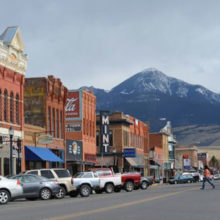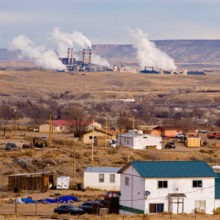Rural America’s economic crisis has generated a flurry of commentary from pundits about what to do. Some argue that policymakers should just get real—that “nobody knows” what to do about rural America’s accelerating economic marginalization. They warn against wasteful public investment schemes to bail out failed economies. Others say manufacturing can return while some emphasize the importance of social services and hard infrastructure.
For their part, rural leaders have pointed out, rightfully, that rural areas are not monolithic or all in decline. Many are succeeding in innovative and creative ways. A common thread in the success stories, though, is a remarkable individual or small group of leaders succeeding despite overwhelming odds. Individual stories, while hopeful, don’t offer readily transferable solutions to their peer communities. Nor do they change the very real economic, geographic, and policy headwinds affecting rural communities. Largely absent from all this discussion are two fundamental public policy issues: public revenue and transition-oriented planning.
Our research reveals how fiscal policy choices can exacerbate economic vulnerability and limit the range of choice in rural places. We’ve also shown that the quality of local institutions (from local government offices to organized community groups) makes a difference in times of crisis. Rather than asking politicians to pick a winning economic development strategy out of a hat and throw money at it, we advocate for a bottom up approach, with support from policy reform and strategic investment, to build resilience and adaptive capacity.
A three-step “Transition, Revenue and Investment” process can help build rural community resilience to the disruptive effects of economic transition. Step 1 (transition) focuses on a forward-looking assessment of the local economic landscape including existing dependencies and limits on local authority to use public revenue to address transition impacts. Step 2 (revenue) focuses on solutions to maximize the capture, retention and circulation of local wealth, and Step 3 (investment) embeds these fiscal strategies within long-term community planning that builds social capital and institutions critical to guiding local investment.
Tax policy plays a critical role in the resilience of rural America to the effects of economic transition. The most vulnerable communities are isolated from major cities and often have limited institutional and leadership capacity. Fiscal policy can compound their problems. These places tend to be dependent on volatile natural resource sectors which are most affected by economic restructuring.
In recent decades, state taxation and expenditure limitations (TELs) have become increasingly popular policy responses to assure fiscal conservatism. However, TELs often require local governments to use windfall revenue during resource booms to lower property taxes. When revenue substitution meets TELs, the result is a hamstrung local government that cannot replace lost revenue in the subsequent bust. Such restrictions can also work to negate the fiscal benefits of economic diversification. Tax breaks to new businesses further constrain local governments by dampening the benefits of new development. Federal assistance programs can be overly-prescribed and poorly targeted, further limiting the ability to use funds to meet locally defined needs. These policies amplify the risk of fiscal crisis, erode local institutional capacity, and encourage a backwards-looking view of the economy that clings to declining industries as the only way to fund critical local services.
Unwinding fiscal dependency is necessary to realize the potential of rural America. Solutions that allow communities to capture and invest windfall revenue—whether at the start or end-of-life of development projects—and plan for transition are required. For example, all states with significant natural resource production have established permanent funds that stabilize and save resource-based revenue, a strategy that must be extended to the local level. The U.S. Senate has proposed the first ever natural resource endowment benefitting local governments. Programs like the growing local investment cooperative movement and New Mexico’s novel local finance approach to renewable energy projects highlight how strategic policy updates can enhance the local circulation of public and private capital.
With policy barriers removed, the next step is to invest in social capital. An established body of scholarship on community resilience emphasizes the importance of local people and institutions in times of crisis. When planning and self-organizing are a matter of habit for communities, they respond more successfully when challenges hit. Formal and continuous interactions of diverse local stakeholders, particularly those that result in a community vision of short- and long-term goals (e.g., planning), are critical elements of responding to and making choices in the context of transition. Networks that leverage ideas and resources across localities enhance and strengthen the resilience of local institutions. Robust local institutions in turn bolster the transparency and strategic thinking necessary to ensure the benefit of public investments.
Yet the fact is that in many places, declining public services and population loss have left rural residents tapped out and over-committed. That’s why we need to think creatively about the processes and resources necessary to enable transition planning. In Montana, one visionary local government has created a regional network of AmeriCorps VISTA volunteers to support public health planning—what better way to build a social services workforce, encourage rural-urban connectivity and meet critical capacity gaps? Integration is another “low-hanging” and unrealized efficiency; some institutions (such as nonprofit hospitals) are mandated to plan but do not explicitly link their plans to discussions about local finances and economic change. By integrating planning activities, stakeholders have a chance to do better planning and save resources.
How to help rural America? The honest perspective is that rural and isolated communities face wrenching transition with few obvious solutions. This makes it critical to reform the flawed fiscal policies that make the situation worse by creating dependence, eroding institutions, and stripping leaders of autonomy to adapt to change. A solution to uncertainty is to focus on resilience – to allow communities to build wealth over time through investment in public reserves of both fiscal and social capital.
Originally published in the Daily Yonder, April 5, 2019 by Mark Haggerty and Julia Haggerty.


